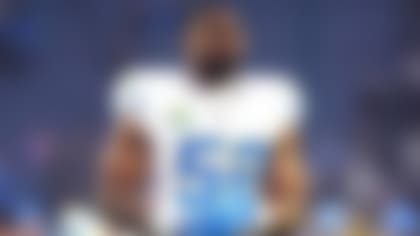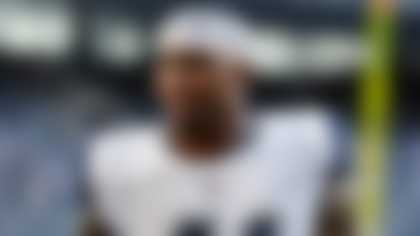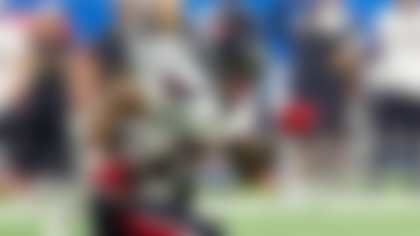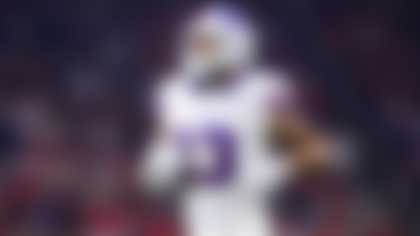NFL chief medical officer Dr. Allen Sills made an appearance Friday on The Pat McAfee Show to discuss a number of topics related to player safety ahead of the 2023 season, from the adoption of a new kickoff rule to the use of Guardian caps during training camp practices.
Sills called the new kickoff rule, which was adopted in May after its initial proposal by the competition committee in March, a "stopgap" and did not commit to it being in the league's long-term vision.
"I think it's a stopgap," the NFL CMO told McAfee. "I think it's an interim measure, while hopefully we can figure out a better solution."
The rule stipulates that a fair catch called for on a kickoff inside the 25-yard-line results in a touchback and the ensuing possession beginning at the team's own 25-yard line. The change is for one year only and is expected to decrease the kickoff return rate by 7 percent and drop the concussion rate on kickoffs -- which has been on the rise, according to Sills -- by 15 percent, per league data.
Sills explained that the league is having an "ongoing conversation" on how to reduce injuries on all plays, and that this year's rule is only a temporary solution.
"It's a really long process, but this year's rule, I look at it as a stopgap, it's an interim step while we try to figure out something better for the long term," Sills added. "But it feels like we need to do something given how many injuries are happening on that particular play in proportion to other plays in the game."
Sills also addressed the debate between grass and artificial surfaces. In recent years, a growing number of players and the players' union have called for the NFL to commit to more grass practice and game surfaces, citing injuries that are suffered on artificial turf fields.
The NFL CMO said studying playing surfaces is "an incredibly active area of work" for the league.
"The bottom line is it is way, way more complicated than it might seem on the surface, no pun intended," Sills explained. "What you come to realize is we don't just have two kind of surfaces in the NFL -- grass surface and artificial surface. We've got almost 30 different surfaces. ... When you start looking at what is the safest surface, you really have to take into account all the different injuries, but you also have to take into account how much variability is in surfaces."
Sills told McAfee that, for example, the league is utilizing a "small robot that drives around the playing surface and takes measurements on all different aspects of the playing surface" this season to further understand the fields of play and eventually provide a consensus opinion.
"If we went to our ownership tomorrow and said, 'Here's the safest field. We've proved beyond a shadow of a doubt this is the safest field,' I think they would all get behind that," Sills said. "We just have not been able to get to the point of saying this is the safest surface. We just have not had the data to say that this surface is far better than others."
Asked about the future use of Guardian Caps in the game, Sills said that he did not anticipate the padded shells -- worn on helmets by certain players during practices -- being used in games.
"I don't think the future of the game is about a Guardian Cap, per se," Sills said. "I think what we can learn from that again is how can we design a better helmet, what are the materials that may make the helmet safer and again more importantly how do we not use the head, how do we get the head out of blocking and tackling, all the things that can be done without having to have head contact."
The Guardian Caps that were worn during training camps last season are now mandated at every preseason practice, as well as every regular-season and postseason practice with contact. Players at position groups where head contact is seen most (running backs, fullbacks, linemen, linebackers) are required to wear the cap.
Last season, players were only required to wear the caps up to the second preseason game. The league's data showed that if one player is wearing the Guardian Cap at the time of a helmet hit, the cap will absorb 11 to 12 percent of the force. If both players are wearing the cap and have a helmet-to-helmet hit, the force of the impact is reduced by around 20 percent.
"You can make the game both safer and more exciting. Those are not mutually exclusive," Sills said Friday. "If you look back, football has always been about innovation, right? Whether you talk about the forward pass or the introduction of the plastic shell helmets or so many different things, football has always evolved and it should evolve. As we learn more and as we know more, as we understand more, we have an obligation to try to make it better for those that come behind us, so that the game will persist and will remain as great as it has been."












